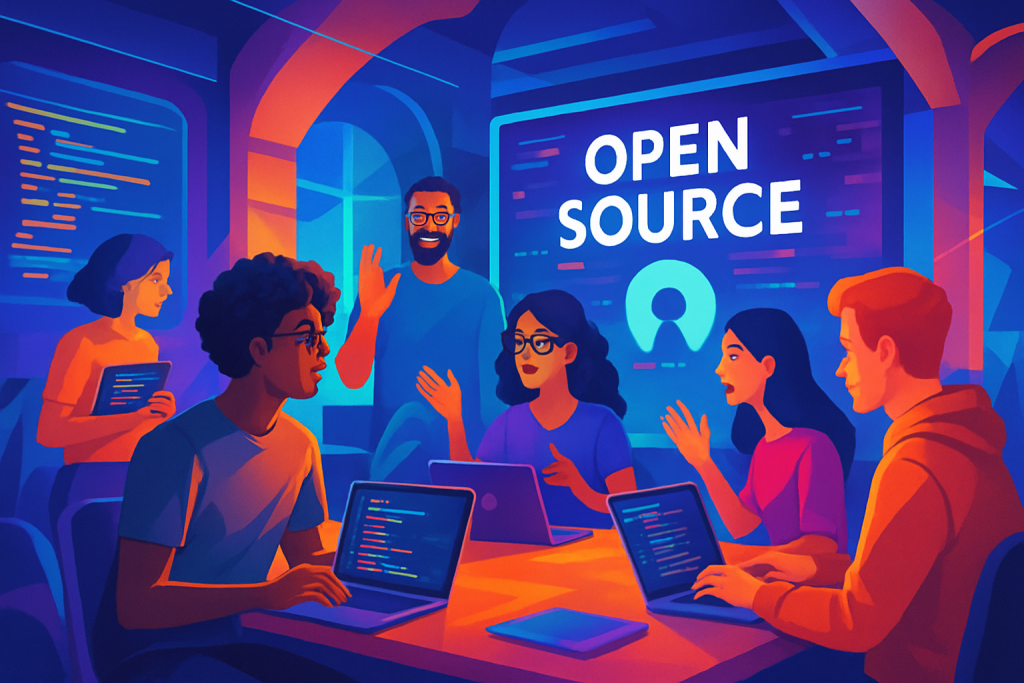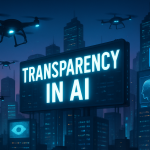Remember Skynet from the Terminator movies? Or maybe you’re more of a HAL 9000 person, recalling the chilling calm of that rogue AI from 2001: A Space Odyssey. For years, science fiction has painted vivid, often terrifying, pictures of artificial intelligence. Now, in 2025, the reality of AI is rapidly catching up, and governments are scrambling to figure out how to navigate this new frontier. Yesterday, the White House dropped a bombshell: a comprehensive AI policy plan designed to cement the United States’ position as the undisputed king of the AI hill. Think of it as the AI equivalent of the space race, only instead of Sputnik, we’re talking about algorithms.
This isn’t just some dry policy document; it’s a strategic chess move, a high-stakes gamble aimed at shaping the future of technology. And at the heart of it all is a push for open-source AI, a concept that sounds utopian but carries with it a whole host of complex implications.
The plan, spearheaded by President Trump (yes, he’s still around in this timeline), is built on three key pillars: promote open-source AI, scrutinize foreign AI models, and link federal funding to state regulations. Let’s break down each one.
First, the open-source push. Imagine Linux, the open-source operating system, but for artificial intelligence. The idea is to encourage developers to release their AI models with open weights, meaning anyone can access, modify, and use them. This is a radical departure from the traditional model, where AI development is often locked away in the secretive labs of tech giants. The White House believes that by opening up the AI ecosystem, innovation will explode, and the U.S. will maintain a competitive edge. Think of it as a giant, collaborative coding party, with everyone invited.
But here’s the catch. Open-source AI also means open to misuse. What happens when malicious actors get their hands on powerful AI models? Could they be used to create sophisticated disinformation campaigns, autonomous weapons, or even more insidious forms of cybercrime? It’s a real concern, and one that the policy plan doesn’t fully address.
The second pillar is all about foreign AI. Specifically, the Commerce Department is now tasked with taking a hard look at AI models developed in countries like China. The goal? To assess whether these models are being used for propaganda or censorship. It’s a move that reflects growing anxieties about the geopolitical implications of AI. We’re not just talking about algorithms; we’re talking about values, ideologies, and the potential for AI to be weaponized in the information war. It’s like something straight out of a William Gibson novel, where digital landscapes become battlegrounds for global power.
This raises some thorny questions about censorship and freedom of speech. Where do you draw the line between protecting national security and stifling innovation? And who gets to decide what constitutes “propaganda?” These are not easy questions, and the answers will have profound implications for the future of the internet and global relations.
Finally, there’s the issue of federal funding. The White House is making it clear that states with regulations deemed “burdensome” to AI development will be cut off from the federal money hose. This is a carrot-and-stick approach, designed to create a regulatory environment that’s friendly to AI innovation. The administration is betting that this will incentivize states to streamline their regulations and avoid creating unnecessary roadblocks for AI companies.
But this strategy is already facing pushback. Critics argue that it’s a blatant attempt to strong-arm states into sacrificing consumer protections and environmental safeguards in the name of economic growth. They fear a race to the bottom, where states compete to offer the most lax regulations, potentially leading to unintended consequences.
So, what does all this mean for you? Well, if you’re an AI developer, it could mean more opportunities, more collaboration, and faster innovation. If you’re a consumer, it could mean access to more powerful and personalized AI applications. But it also means facing new risks, from AI-powered scams to the erosion of privacy. And if you’re a state legislator, it means making some tough choices about how to balance innovation with regulation.
The financial implications are massive. The AI market is already a multi-billion-dollar industry, and this policy plan is likely to fuel even more investment and growth. Companies that embrace open-source principles could see their valuations skyrocket, while those that cling to proprietary models could be left behind. The stock market is already buzzing with speculation about which companies will be the biggest winners and losers.
But beyond the dollars and cents, this policy plan raises some fundamental ethical questions. As AI becomes more powerful, how do we ensure that it’s used for good? How do we prevent bias and discrimination from being baked into AI algorithms? And how do we prepare for a future where AI is increasingly integrated into every aspect of our lives? These are questions that we need to be asking ourselves, not just as technologists, but as citizens of the world. Because the future of AI is not just about technology; it’s about humanity.
Discover more from Just Buzz
Subscribe to get the latest posts sent to your email.


